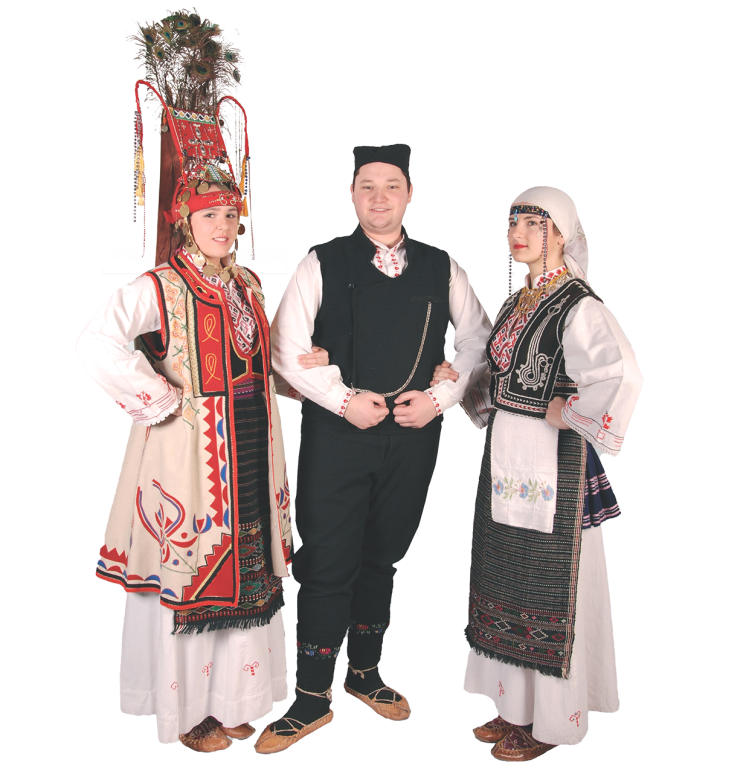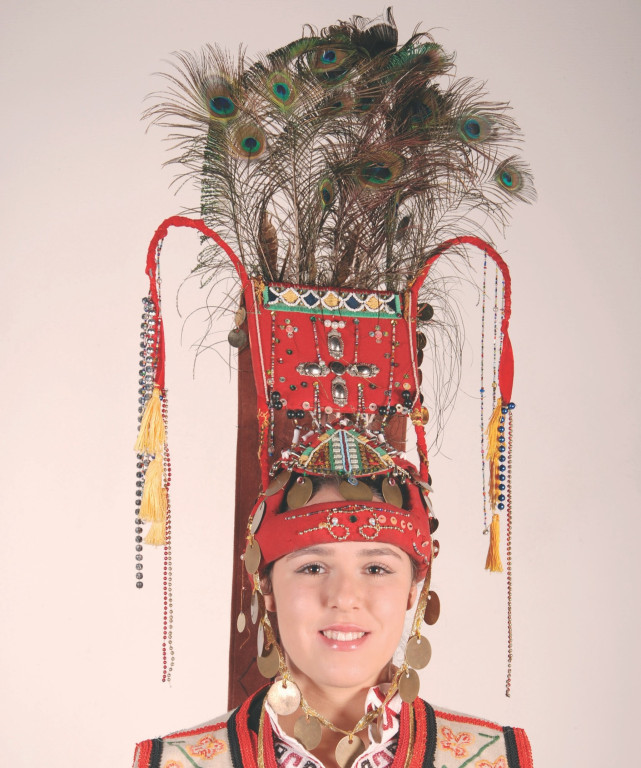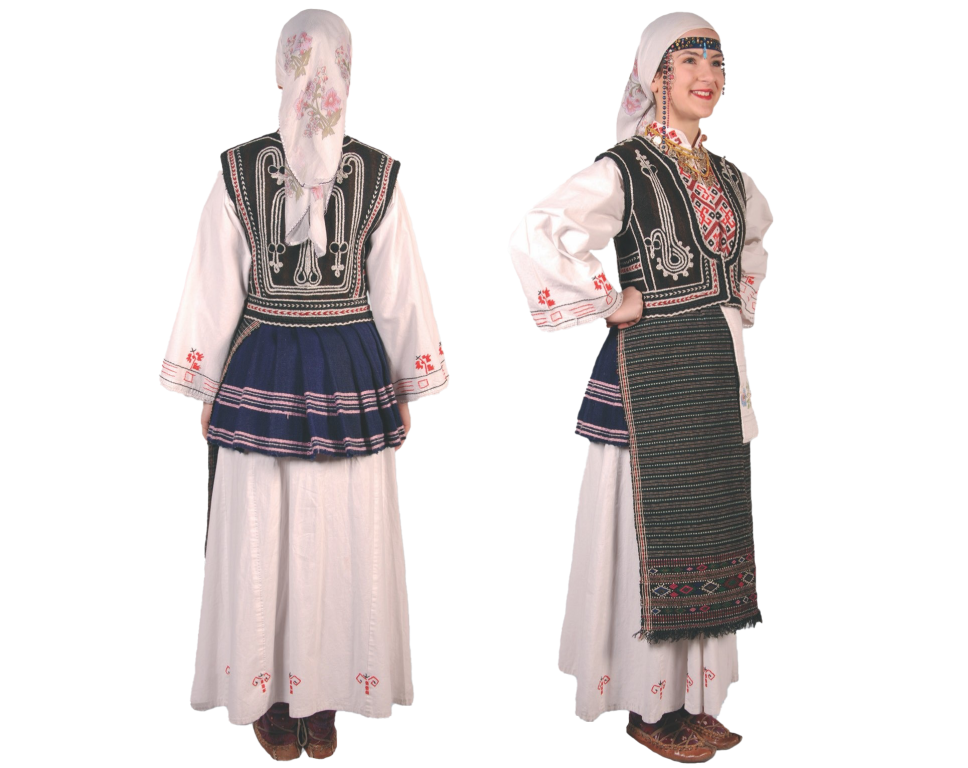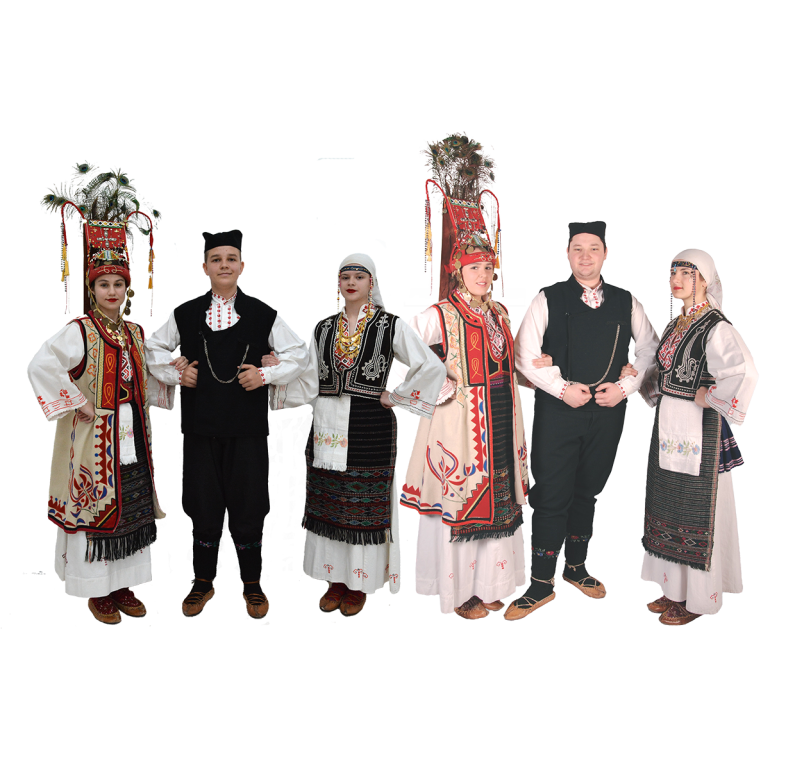Serbian clothing pattern in
Ibarski Kolašin (area of Zubin Potok),
late 19th and first half of the 20th century
A characteristic part of the traditional costume from Ibarski Kolašin is the bridal headpiece, 'perjanica.' The most distinctive part of the 'perjanica' is a bent, horn-like wooden piece in the shape of a lyre, covered with red woolen or cotton fabric. From the upper two corners of the lyre, there are two slightly bent small horns, also wrapped in red material. The outer side of the lyre is decorated with strings of multi-coloured glass beads, arranged in large circular patterns, bordered with small beads. Between these patterns, there are circular or oval mirrors. In addition to plaques with pendants, among which are cross motifs, below the lyre's fringed edge, a net of multi-coloured beads is woven towards the forehead.

From the small horns, down the cheeks, hang several strings of beads and small coins, and at their ends, there is a small sleigh bell ’medenica’.
The shirt is one of the basic elements of women's clothing, which here, as in other regions, serves as both an under and outer garment. According to its design features, the shirt belongs to the type of Dinaric shirts, consisting of a front and back panel, with wedges inserted in the lower part. The sleeves are wide, straight, and flatly attached. The shirts are decorated with embroidery on the collar, chest, lower part of the sleeves, and at the bottom of the skirt. The embroidery, done in red, cherry, black, white wool, and cotton, with a little metal wire, is executed in cross-stitch, openwork, and slanted satin stitch.

Over the shirt, a belt made of homemade wool and cotton was worn, woven in four, and less frequently in two strands. The decorations were stripes, which were made during weaving, predominantly combining two colors, namely white cotton yarn with red or purple, or dark cherry wool.
A characteristic garment is the 'zaprege' a front and back apron. The front 'zapręga' is made horizontally of two fields, gathered at the waist, and open at the front, i.e., not joined. Unlike the large 'zapręga,' the back 'zapręga' is quite short, a small 'zapręga.' Both the large and small 'zapręga' are gathered at the waist on a woolen string or laid in small pleats.

Over the shirt, a vest was worn, a short sleeveless garment that fastened at the bottom, deeply cut at the chest, and decorated along the edges with red and black woolen braids, and on the chest and back with appliqués of red fabric and metal wire braids. A long sleeveless vest made of white wool, 'zubun' as one of the basic upper garments of women's clothing, was worn over the vest and shirt. It was open along the entire front length and long up to above the knees. It was composed of three parts and widened with wedges on the sides. It was mostly decorated along the edges, bordered with homemade woolen braids.
